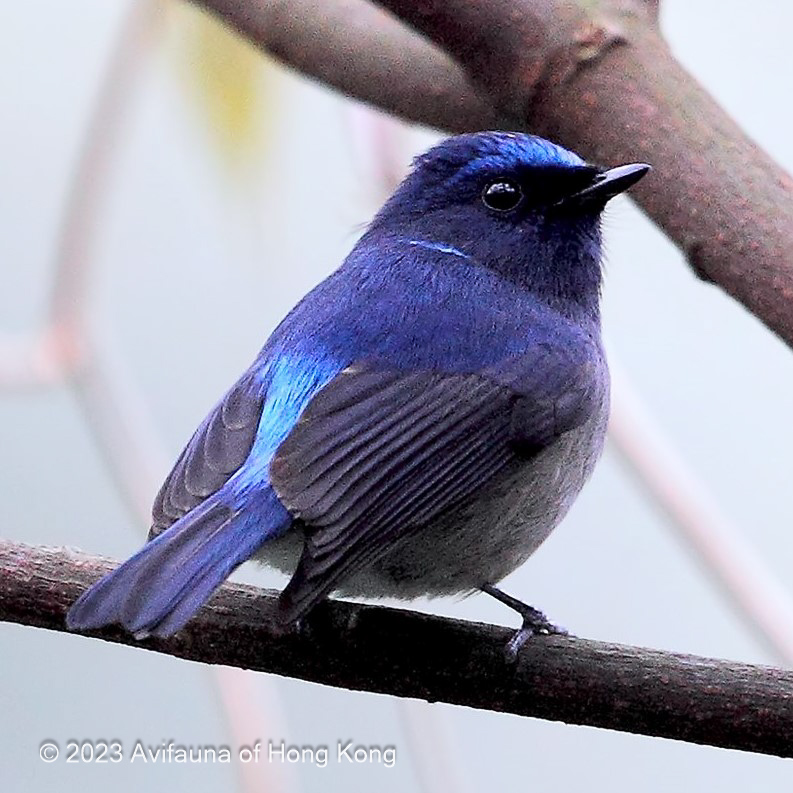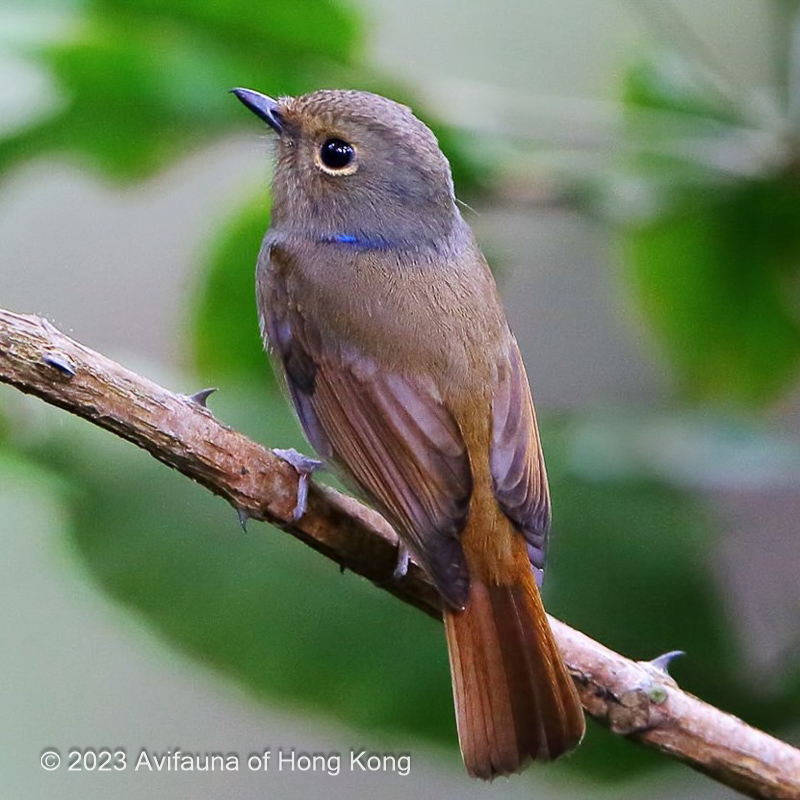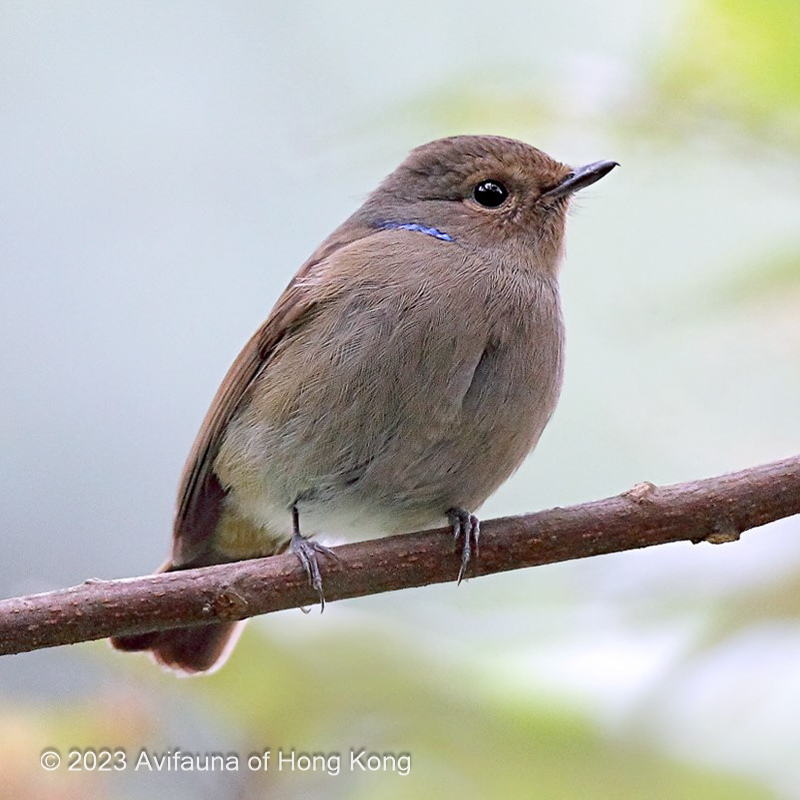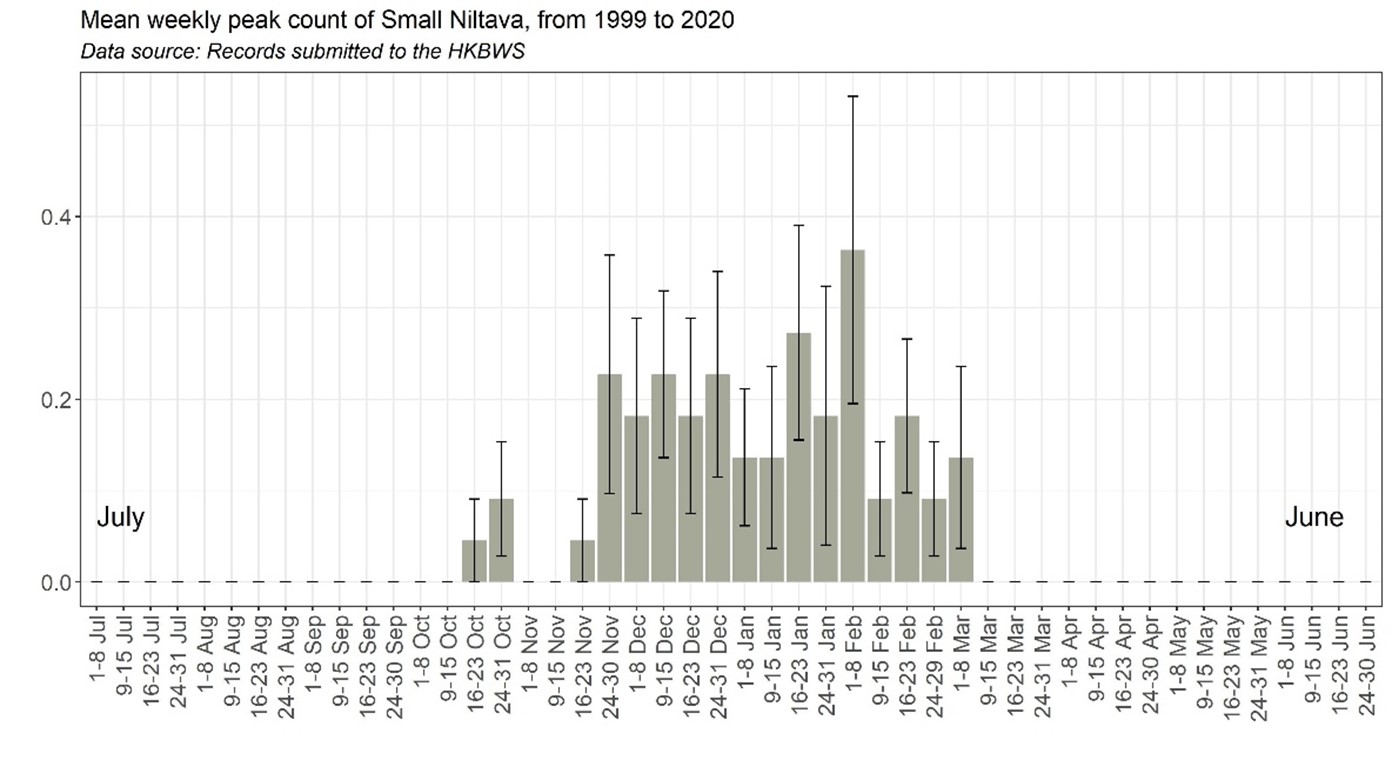Small Niltava Niltava macgrigoriae 小仙鶲
Category I. Rare autumn migrant and scarce winter visitor to wooded areas.
IDENTIFICATION

Dec. 2017, Kenneth Lam.
11-14 cm. The lores, cheek and chin of the male are black; the rest of the face and upper breast are dark blue. The lower breast and belly are greyish or greyish-blue, becoming whiter on the lower belly and vent. Bill and legs black.

Jan. 2011, Michelle and Peter Wong.
The male has purplish-blue upperparts from crown to tail apart from a contrastingly pale blue fore crown and rump, and a pale blue patch on the side of the neck.

Jan. 2011, Michelle and Peter Wong.
The female has brown crown and upperparts with rufous wings and tail. There is a pale blue patch on the side of the neck which varies in prominence.

Jan. 2011, Michelle and Peter Wong.
The throat is brown and the rest of the underparts are greyish-brown.
VOCALISATIONS
Utters a high-pitched two to five-note song that gradually falls in pitch and can sometimes be rendered as ‘three-blind-mice’.
A rattling alarm has also been heard.
DISTRIBUTION & HABITAT PREFERENCE
Most records are from woodland areas in the New Territories (Shing Mun, Tai Po Kau, Tai Lam Country Park, Bride’s Pool), but occasionally elsewhere, including at Lung Fu Shan on HK Island in two winter periods.
OCCURRENCE
A rare migrant during 21-29 October (three records on Po Toi) and a scarce winter visitor from 23 November to 4 March. Most sightings have fallen between the last week of November and the first week of February (Figure 1).
The first two records of this species, both males, were at Pok Fu Lam during 27-28 December 1985 and at Ho Chung on 23 January 1999. They were originally considered to be ex-captive. However, an influx of birds at three different sites during cold weather in late January 2004 prompted a reassessment of its status and the species was transferred to Category I. It occurred in 12 of the 21 winters from 1999/2000 to 2019/20.
Total numbers each winter are low, the highest being seven in 2019/20. It usually occurs singly at any one site but four (two males and two females) were noted at Tai Lam CP between 24 November 2019 and 2 March 2020.
BEHAVIOUR, FORAGING & DIET
Solitary and unobtrusive. Feeds on insects in undergrowth and bushes by sallying out from a low perch. May occasionally move in loose association with other species in a bird wave.
RANGE & SYSTEMATICS
The nominate race is a resident and short-distance altitudinal migrant in the western and central Himalayas. N. m. signata, presumed to occur in HK, has a more extensive range, breeding from the east Himalayas east to southeast China, north and west Thailand and north and central Indochina south to central Annam. In China it breeds from southeast Tibet east to Fujian (Liu and Chen 2020). Although largely resident in its breeding range, there is some movement to lower altitudes in the winter months (Clement 2020).
CONSERVATION STATUS
IUCN: Least Concern. Population trend stable.
Figure 1.

Clement, P. (2020). Small Niltava (Niltava macgrigoriae), version 1.0. In Birds of the World (J. del Hoyo, A. Elliott, J. Sargatal, D. A. Christie, and E. de Juana, Editors). Cornell Lab of Ornithology, Ithaca, NY, USA. https://doi.org/10.2173/bow.smanil1.01
Liu, Y. and Y. H. Chen (2020). The CNG Field Guide to the Birds of China (in Chinese). Hunan Science and Technology Publication House, Changsha.

